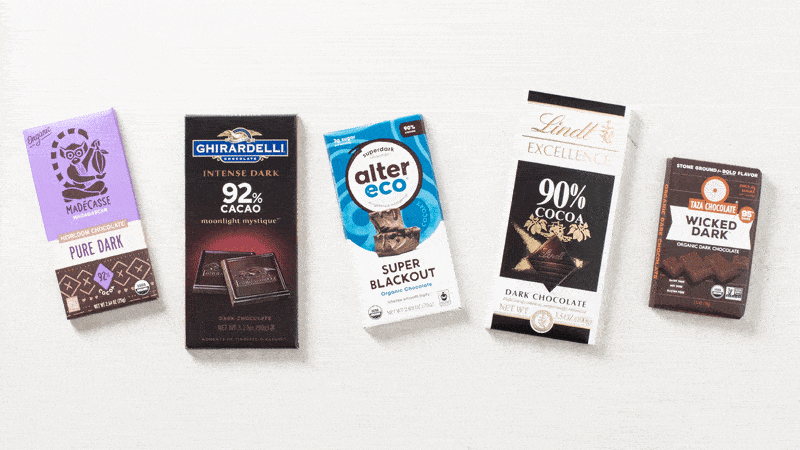Milk Chocolate
Taste Test
We found a 90-percent bar with flavor that's more “beautiful” than bitter.
Last Updated Feb. 14, 2023. Appears in America's Test Kitchen TV Season 21: Bake Sale Favorites

Darker chocolates—bars with 70-plus to 90-plus cacao percentages—are more popular than ever, thanks in large part to trendy low-carb, high fat diets such as the keto diet and consumers desires to eat less sugar. And very dark chocolates, those with cacao percentages in the 90-plus range, not only contain less sugar per bar than lower-cacao-percentage darker chocolates, but they also offer a more nuanced and sometimes more complex chocolate flavor—making them an ideal choice for chocolate connoisseurs and health enthusiasts alike.
To experience these very dark chocolates for ourselves, we selected five nationally available bars ranging from 90 to 95 percent cacao, and ate them plain, offering water and crackers as palate cleansers. While some tasters weren’t initially thrilled about eating very dark chocolate—and true, completely unsweetened chocolate can be difficult to stomach —many were delighted to discover that some of these very dark bars, which only contained small amounts of sugar, were actually delicious.
Most of the bars we tasted had pleasing, smooth textures, except for one that was gritty and grainy. The gritty bar was divisive; a few tasters loved the texture, but others said it was “almost like eating sand.” We generally preferred bars that were silkier, and our winner was extremely smooth. Our science research editor said two factors contribute to a chocolate bar’s texture: Conching and cocoa butter.
During conching—one of the last steps in the manufacturing process (for most Western-style commercial products)—the chocolate is heated and constantly stirred (for more details, see “How Chocolate Is Made”). The result is a chocolate with a very smooth texture. The company that manufactures the gritty chocolate we tasted does not conche, which they say helps preserve the texture of the cacao and sugar. Most of the other companies confirmed their chocolate had been conched, and their bars were much smoother.
The other factor: Cocoa butter, the fat in the cacao bean. Megan Giller, food writer and the author of Bean-to-Bar Chocolate: America's Craft Chocolate Revolution (2017) , told us that a bar made with added cocoa butter—more than the amount existing naturally in the bean—is typically smoother than one without added cocoa butter. That’s because cocoa butter is essentially fat. When we inspected ingredient labels, we noticed the grainy chocolate had the lowest amount of fat per serving in the lineup, 16 grams per 40-gram serving. The company confirmed this bar does not have any added cocoa butter. The remaining bars had much higher fat levels—21.3 gr...
The mission of America’s Test Kitchen Reviews is to find the best equipment and ingredients for the home cook through rigorous, hands-on testing.

This is a members' feature.